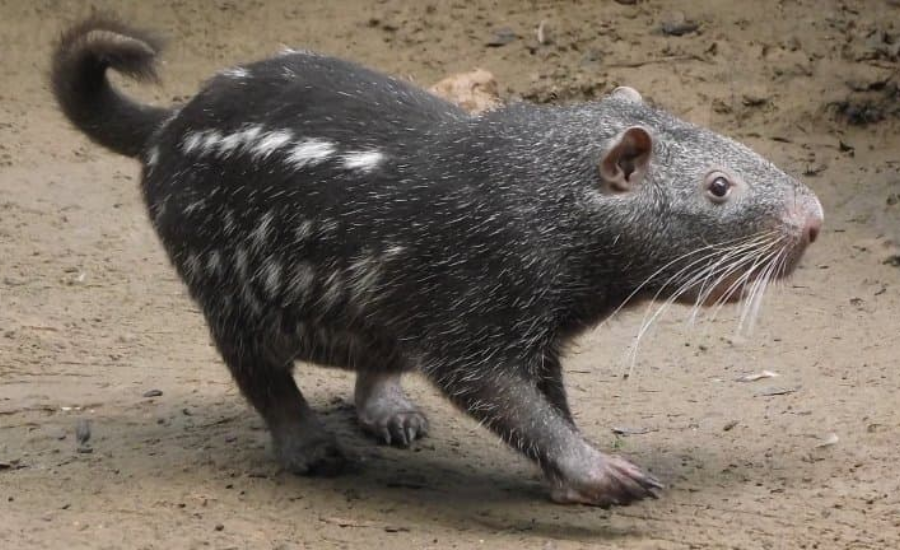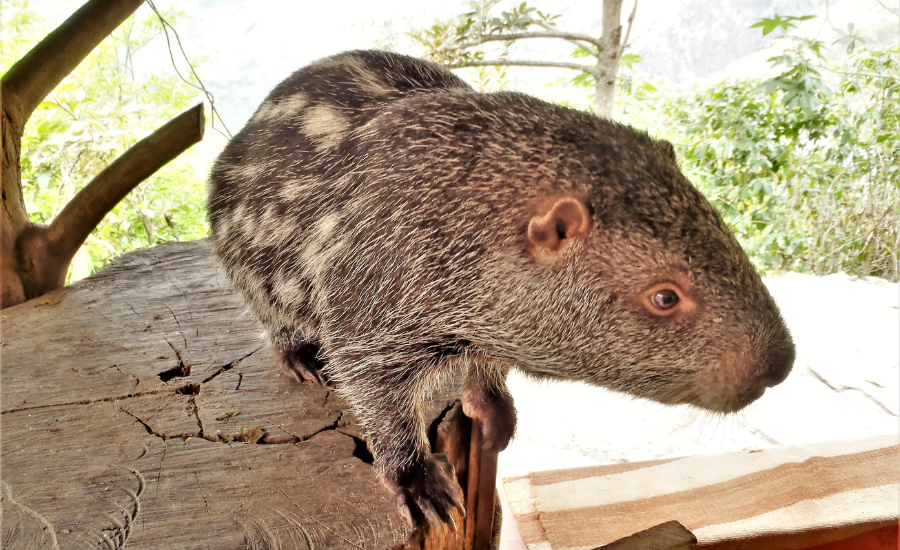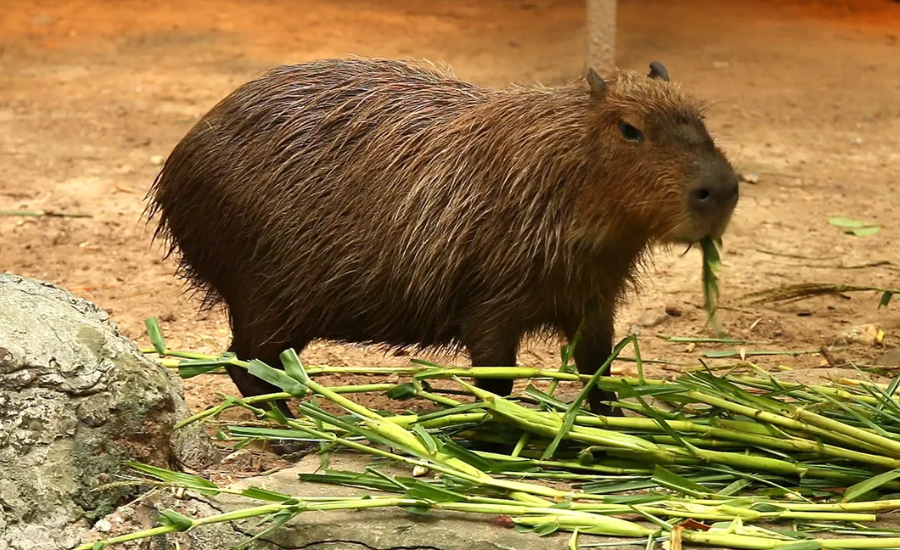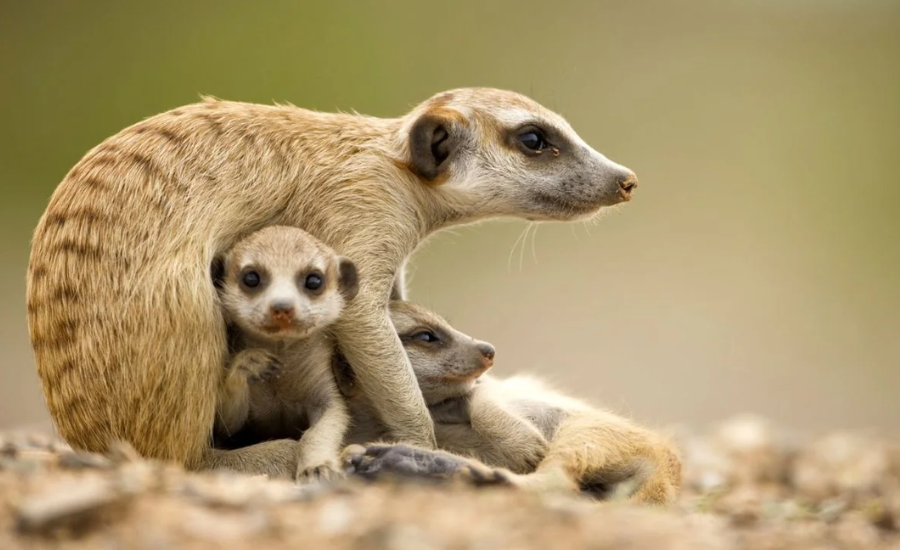Discovering The https://noticviralweb.blogspot.com/2018/02/pacarana-duchandose.html
The natural world is brimming with extraordinary creatures, but few are as fascinating and mysterious as the pacarana. This large rodent, often overshadowed by its more popular relatives like the capybara and guinea pig, remains a hidden marvel of the animal kingdom. Despite its impressive size and unique appearance, the pacarana is not as widely known, which makes its intriguing behaviors all the more captivating. This article aims to shed light on the pacarana’s world, exploring its distinct characteristics and peculiar habits, particularly its unusual bathing rituals. By understanding these behaviors, we gain valuable insights into the species and emphasize the critical importance of preserving their natural habitats for future generations.
What Is A Pacarana?
The pacarana (Dinomys branickii) is a fascinating and sizable rodent that calls the lush rainforests of South America home, particularly thriving in regions like the foothills of the Andes. As one of the largest rodents on the planet, it ranks just behind the capybara and beaver in size, showcasing a robust physique characterized by a stocky body, short limbs, and a distinctive coat marked with white or light-colored spots and stripes along its dark fur. Although it bears a superficial resemblance to porcupines due to its sturdy build, the pacarana is quill-less, setting it apart from those spiky counterparts.
This gentle giant of the rodent world is nocturnal, meaning it is most active during the night, foraging for its diet of fruits, leaves, and other plant material. Despite its size, the pacarana is surprisingly slow-moving and docile, often appearing unhurried in its movements, which adds to its charm as a subject of study for wildlife enthusiasts and researchers alike. Its calm demeanor and unique behavioral traits, such as its rare bathing habits, make the pacarana not only an intriguing species but also a reminder of the biodiversity that thrives in the rainforests. As such, understanding and protecting these animals is crucial for maintaining the ecological balance of their natural habitats.
Unique Behaviors Of The Pacarana

The pacarana exhibits several unique behaviors that set it apart from other rodents. Primarily herbivorous, pacaranas sustain themselves on a diet rich in fruits, leaves, stems, and other plant materials found within their rainforest habitats. Their feeding habits play a crucial role in the ecosystem, aiding in seed dispersion and contributing to the health of the forest. Active mostly at night, these nocturnal creatures spend their evenings foraging for food under the cover of darkness, which helps them avoid predators. By day, pacaranas retreat to the safety of burrows, hollow logs, or dense vegetation, where they rest and remain hidden from potential threats.
One of the most notable aspects of pacaranas is their reproductive behavior. Unlike many rodents that have high reproductive rates, pacaranas are quite the opposite—they breed infrequently, producing small litters. This low reproductive rate significantly impacts their population growth and contributes to their rarity. As a result, the pacarana’s conservation status is of concern, as they face additional pressures from habitat loss and environmental changes. Their limited breeding makes them particularly vulnerable to external threats, underscoring the importance of targeted conservation efforts to protect and preserve this remarkable species.
These unique behavioral traits not only make the pacarana an interesting subject of study but also highlight the delicate balance of their existence. Understanding their habits and life cycle is essential for developing effective conservation strategies that can help ensure the survival of this extraordinary rodent in the wild.
The Bathing Habits of the Pacarana
Among the pacarana’s array of distinctive behaviors, one of the most surprising and charming is its bathing habit. While many rodents are typically averse to water, the pacarana displays a strikingly different attitude. This rodent has been observed engaging in a behavior akin to bathing, a rare sight among its kind. Far from simply splashing about, pacaranas appear to immerse themselves with intention, taking the time to groom and cleanse their fur in a way that suggests they derive enjoyment from the process. This behavior is not merely utilitarian; it offers a deeper insight into the pacarana’s complex and gentle nature.
The pacarana’s fondness for water might serve several purposes, from temperature regulation in the humid rainforest environment to maintaining hygiene by removing dirt and parasites from their fur. Additionally, this behavior could have social or psychological benefits, possibly serving as a calming routine or a form of self-care that is uncommon among rodents. Such behavior, as noted in sources like “https://noticviralweb.blogspot.com/2018/02/pacarana-duchandose.html,” highlights the unique ways pacaranas interact with their environment, setting them apart from their more well-known relatives.
This unusual bathing habit not only adds to the pacarana’s charm but also emphasizes the need to understand the broader behavioral repertoire of these animals. Observing such activities can provide valuable clues about their daily life and social structures, which are often hidden due to their elusive nature. As we continue to study these fascinating rodents, each new discovery about their behavior underscores the importance of conserving their habitats, ensuring that these behaviors can continue to be observed and appreciated in the wild.
Why Do Pacaranas Bathe?

While the exact reasons behind the pacarana’s bathing habits remain a mystery, several compelling theories have been proposed by researchers and wildlife enthusiasts. One possibility is that this behavior helps the pacarana regulate its body temperature, providing a way to cool down in the warm, humid conditions of its rainforest habitat. The dense canopy and thick underbrush of the rainforest can create a stifling environment, and immersion in water may offer a refreshing escape from the heat.
Another theory suggests that bathing serves an important grooming function, allowing the pacarana to maintain its thick, patterned fur. By regularly engaging in water-related activities, pacaranas may effectively rid themselves of dirt, debris, and parasites, which is crucial for their overall health and well-being. Clean fur not only supports the animal’s physical health by reducing the risk of infections or infestations but also enhances their camouflage abilities, helping them blend into the mottled forest floor.
Additionally, bathing might play a role in the social dynamics of pacaranas. For many animals, grooming behaviors are linked to social bonding, and while pacaranas are not known to be highly social creatures, bathing could still serve as a comforting and routine activity that provides psychological benefits, such as stress relief or a sense of security. It might also be a self-soothing behavior that helps these rodents manage their environment and maintain a state of calm.
Overall, while the precise motivations behind the pacarana’s bathing are not entirely clear, these behaviors highlight the complexity and adaptability of this intriguing species. Continued observation and research are essential to fully understand the nuances of their behavior, which not only enriches our knowledge of the pacarana but also underscores the importance of protecting the delicate ecosystems they inhabit.
The Importance of Understanding Pacarana Behaviors for Conservation

Gaining a deeper understanding of the behaviors of animals like the pacarana is essential not only for advancing scientific knowledge but also for effective conservation strategies. The pacarana’s natural habitat faces significant threats from deforestation, agricultural expansion, and encroaching human development. These activities disrupt the delicate balance of their rainforest environment, making it increasingly difficult for the species to find suitable living conditions and resources.
Protecting the pacarana’s habitat is crucial for ensuring its survival and well-being. By safeguarding these rainforests, we help preserve the complex ecosystems that support not only pacaranas but countless other species as well. Efforts to conserve these environments are critical for maintaining biodiversity and ecological balance.
Studying unique behaviors, such as the pacarana’s bathing habits, offers valuable insights into their lives and needs. These behaviors reveal how pacaranas interact with their environment, adapt to challenges, and maintain their health. Appreciating these unique traits fosters a greater connection to the species, highlighting their importance and the urgent need for conservation.
By raising awareness and understanding of the pacarana’s lifestyle and the pressures it faces, we can drive more informed and passionate conservation efforts. Engaging with and protecting these remarkable creatures and their habitats not only contributes to their survival but also enriches our own appreciation of the natural world. Through collective efforts and informed actions, we can help ensure that pacaranas continue to thrive in their native rainforests for generations to come.
Frequently Asked Questions (FAQs)
1. What is a pacarana?
A pacarana (Dinomys branickii) is a large, nocturnal rodent native to the rainforests of South America. It is one of the largest rodents in the world, known for its robust body, short limbs, and distinctive coat with white or light-colored markings.
2. Why are pacaranas considered unique among rodents?
Pacaranas are unique due to their large size, distinctive fur pattern, and unusual behaviors, such as their bathing habits. Unlike many rodents, pacaranas engage in bathing, which is rare among their kind and provides insight into their grooming and social behaviors.
3. What do pacaranas eat?
Pacaranas are primarily herbivorous, feeding on a diet that includes fruits, leaves, and stems. Their diet plays a crucial role in their habitat by contributing to seed dispersal and forest health.
4. How do pacaranas bathe?
Pacaranas have been observed immersing themselves in water, which appears to serve multiple purposes. Bathing may help them regulate their body temperature, remove parasites and debris from their fur, and possibly offer psychological comfort.
5. Why is the pacarana’s habitat at risk?
The pacarana’s habitat is threatened by deforestation, agricultural expansion, and human encroachment. These activities lead to habitat loss and fragmentation, which can endanger the species and disrupt their ecological balance.
6. How can we help conserve the pacarana?
Conservation efforts for the pacarana involve protecting their natural rainforest habitats from deforestation and degradation. Supporting conservation initiatives, raising awareness about their plight, and promoting sustainable land use practices are crucial for their preservation.
Conclusion
Understanding the intricate behaviors of the pacarana, such as their distinctive bathing habits, offers valuable insights into this remarkable rodent’s life and ecological role. By exploring these unique traits, we not only enhance our scientific knowledge but also deepen our appreciation for the natural world. Given the threats posed by habitat destruction and human activities, protecting the pacarana’s rainforest home is more critical than ever. Through informed conservation efforts and public awareness, we can contribute to the preservation of this fascinating species and ensure that future generations continue to marvel at the pacarana’s unique charm and ecological significance.






